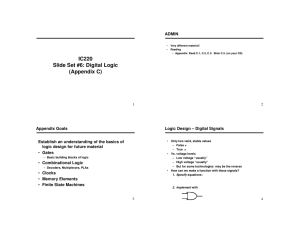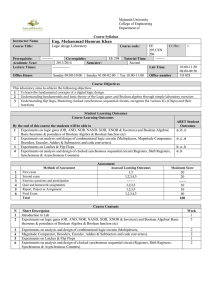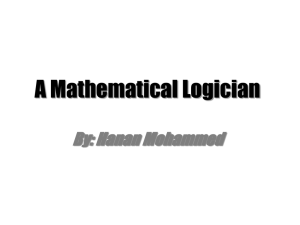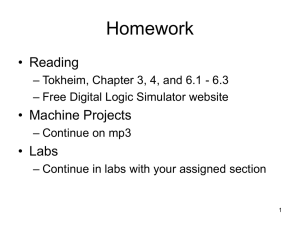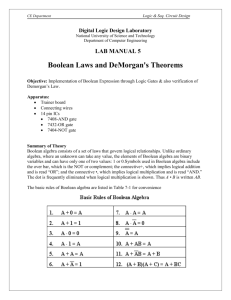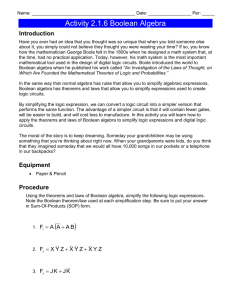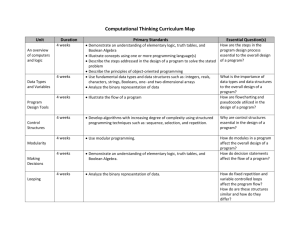Boolean Algebra
advertisement
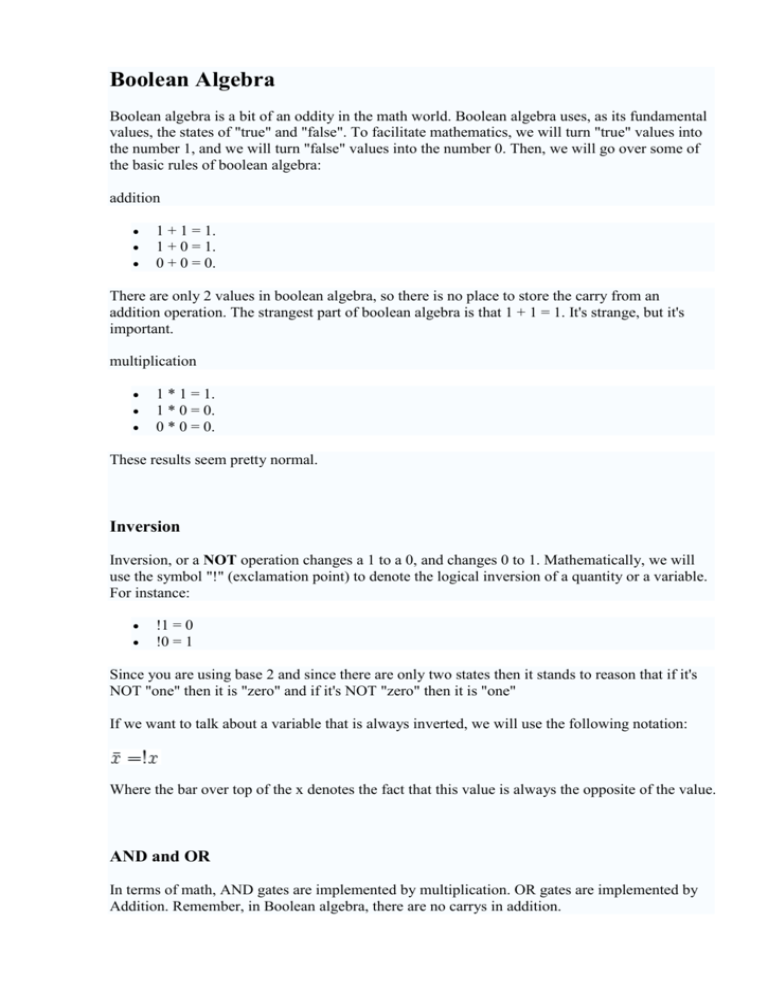
Boolean Algebra Boolean algebra is a bit of an oddity in the math world. Boolean algebra uses, as its fundamental values, the states of "true" and "false". To facilitate mathematics, we will turn "true" values into the number 1, and we will turn "false" values into the number 0. Then, we will go over some of the basic rules of boolean algebra: addition 1 + 1 = 1. 1 + 0 = 1. 0 + 0 = 0. There are only 2 values in boolean algebra, so there is no place to store the carry from an addition operation. The strangest part of boolean algebra is that 1 + 1 = 1. It's strange, but it's important. multiplication 1 * 1 = 1. 1 * 0 = 0. 0 * 0 = 0. These results seem pretty normal. Inversion Inversion, or a NOT operation changes a 1 to a 0, and changes 0 to 1. Mathematically, we will use the symbol "!" (exclamation point) to denote the logical inversion of a quantity or a variable. For instance: !1 = 0 !0 = 1 Since you are using base 2 and since there are only two states then it stands to reason that if it's NOT "one" then it is "zero" and if it's NOT "zero" then it is "one" If we want to talk about a variable that is always inverted, we will use the following notation: Where the bar over top of the x denotes the fact that this value is always the opposite of the value. AND and OR In terms of math, AND gates are implemented by multiplication. OR gates are implemented by Addition. Remember, in Boolean algebra, there are no carrys in addition. To understand the difference between AND and OR, let's examine the following truth tables: AND X 0 0 1 1 OR Y 0 1 0 1 RESULT 0 0 0 1 X 0 0 1 1 Y 0 1 0 1 RESULT 0 1 1 1 In the case of AND, both must be 1 for the result to be 1. In the case of OR, at least one must be a 1 for the result to be 1.
